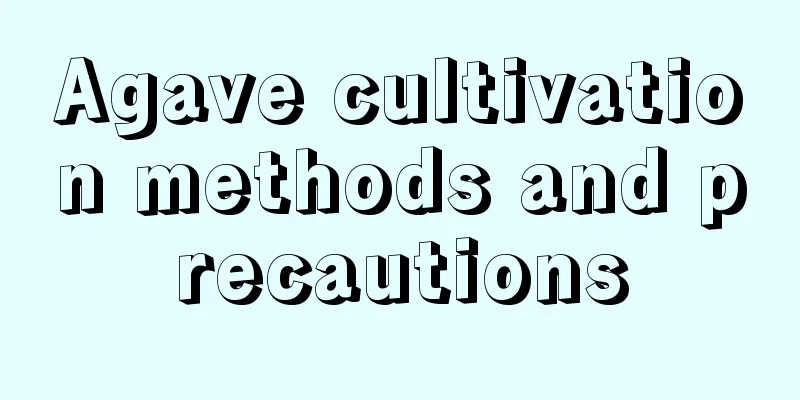Agave cultivation methods and precautions

How to grow agaveTemperature and lightThe suitable growth temperature for agave is 15-25℃. Low, cold and dry temperatures in winter are most conducive to the growth of agave, and the wintering temperature is above 5°C. Agave likes light, and for daily care it should be placed in a sunny and well-ventilated place. Variegated varieties need proper shade in summer to keep their color fresh. In winter, the daylight hours are relatively short, so try to provide sufficient sunlight and place it in a sunny place indoors. soilAgave is not very demanding on the soil. Generally, loose, fertile, well-drained soil is chosen. When potting, mix leaf mold, sandy loam, and add a small amount of bone meal. Water and fertilizer managementAgave also does not require much water. It must be given sufficient water during its growth period, and you can water it a little more appropriately. You can water it abundantly in summer, but reduce watering after autumn. During the winter dormancy period, it is not advisable to water it too much. Agave prefers a relatively dry growing environment, so drainage should be done well at ordinary times. Agave has low fertilizer requirements, but fertile soil will make it grow better. You can fertilize it once a year, and apply a thin layer of fertilizer once a month during the growing season. Do not spray fertilizer frequently, otherwise it will easily cause fertilizer damage. Things to note when growing agaveReproduction methodGenerally speaking, the division method of agave is more practical, and it can also be propagated by cuttings and sowing. Pests and diseasesAgave often suffers from leaf spot disease, anthracnose and gray mold, and is damaged by scale insects. Other considerationsAgave needs to be repotted in the spring every year, which is in April every year. Water and fertilizer management should be done well at ordinary times. Do not water too much to avoid rot, and do not apply too much fertilizer to avoid fertilizer damage. |
<<: Cultivation methods and precautions of hollyhock
Recommend
What vegetables to plant in spring
1. Cabbage Cabbage is a herbaceous plant of the g...
Wheat Growth Environmental Conditions and Characteristics
Wheat Growth Environmental Conditions and Require...
What is the best fertilizer for apple trees?
When to fertilize apple trees Generally speaking,...
How to prune the crabapple
When to prune the crabapple tree The most suitabl...
How and when to plant peony
1. Planting time It is best to plant peonies arou...
How to propagate the money tree by cuttings?
The money tree is a succulent plant with round an...
Differences between German Iris and Iris
1. Different varieties The German iris is one typ...
How many years does winter peach bear fruit? When does it bloom and bear fruit?
Winter peach planting results after several years...
What to do if the leaves of Bear's Paw turn yellow
1. Reasons for yellowing leaves 1. Insufficient l...
How does the dragon blood tree fork?
Topping fork time selection Although the growth o...
Is it better to grow spider plants in water or soil?
1. Hydroponic farming 1. Breeding method: When gr...
Cassava cultivation method
1. Soil Cassava has strong adaptability to soil a...
The causes and solutions of the excessive growth of the lotus
The reason why the lotus grows too long Insuffici...
Is windmill jasmine poisonous?
1. Is it toxic? It is toxic. Because it is a plan...
How many years does it take for yellow wood fragrance to bloom? Does yellow wood fragrance have fragrance?
1. How many years can it bloom? As a rose variety...









